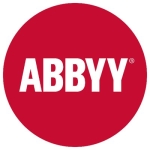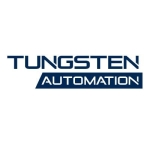What is our primary use case?
We automate mundane and repetitive tasks for our clients, like invoice processing, purchase order creation, sales order creation, refund processing, transaction chargeback, and many more.
These tasks are basic and require no special skillset, hence are an extra cost to the company. By automating them, the company saves a lot of manpower, leaving them to better utilize their resources for a more value-added task. This ultimately leads to a better return on investment.
How has it helped my organization?
Automation Anywhere has provided the capability to automate repetitive tasks for the organization, which in turn has lead to a lot of cost-savings. It has also helped in removing the robots out of humans, by investing their time in more value-added activities.
Humans can work approximately eight to ten hours, whereas if the same activities are done by the bots, they can keep on working round the clock. Therefore, improving the productivity of the organization.
The percentage of human error in such cases has become little-to-none when processed by the bot.
What is most valuable?
The universal recorder along with the Excel basic and advanced packages has been highly valuable. With Excel basic, we can perform basic Excel activities even if Excel is not installed in the system. The Excel advanced package has a lot of features added, which were initially not there in Version 11 and we had to rely on external scripting for the same.
Earlier in Version 11, we had different sets of recordings, which often made things confusing but with the universal recorder, the situation is not the same anymore.
What needs improvement?
The UI could be made better because the UI in Version 11 was better and easier as compared to a2019. We were able to fit in more lines of code on the screen at a time, whereas in a2019, we can see much less. This means that the developer has to scroll again and again to view his/her code.
An option should be provided to disable the flow and dual-mode since those are not used often by the developers, and hence take up extra space on the screen.
The IQ bot should also have a feature to process documents with multiple invoices, as currently, we need to split the document according to invoices beforehand.
For how long have I used the solution?
I have been working as an RPA Developer for the past three years. For the first three and a half years, I was using Version 10 and 11 of Automation Anywhere, and for the last six months, I have been using A2019.
What do I think about the stability of the solution?
The solution is quite stable.
What do I think about the scalability of the solution?
The solution is easily scalable. We can add more bot runners or creators as per our need when the requirements increases.
How are customer service and technical support?
The technical support was great. The support team response is quite prompt and they will provide you the solution to your issues most of the time.
Which solution did I use previously and why did I switch?
Automation anywhere was my first RPA tool.
How was the initial setup?
The initial setup is straightforward and if there is any difficulty, the AA support team will come to your rescue.
What about the implementation team?
Our in-house team automates processes for our clients. The expertise level was good.
What was our ROI?
From my experience, I can say that the initial setup cost is easily recovered over a period of time once the bots start running in production. We develop bots for our clients and as per their information, most of the time, the automation of a single process has returned their original investment amount.
Which other solutions did I evaluate?
We did evaluate other RPA tools but we found Automation Anywhere to be more user-friendly and easy to use.
Which deployment model are you using for this solution?
On-premises
Disclosure: I am a real user, and this review is based on my own experience and opinions.

















